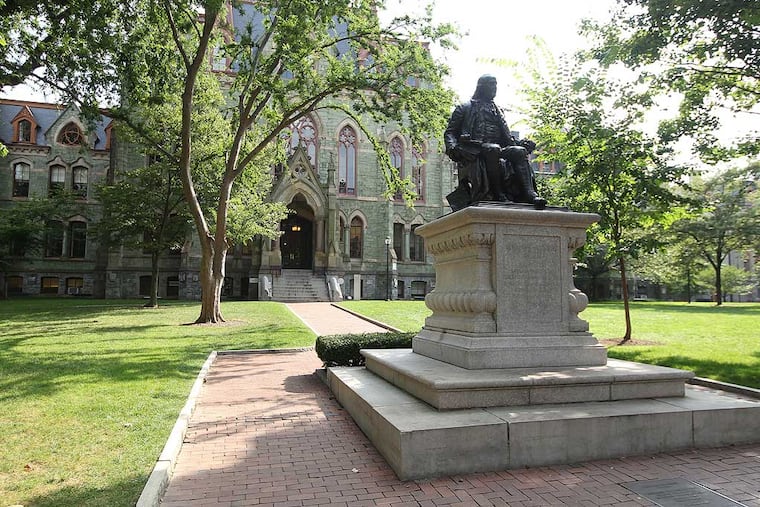Swarthmore student: Elite colleges should stop favoring children of alumni | Opinion
So-called “legacy admissions” widen inequalities and inflate the number of white, wealthy students

Recently, Amherst College announced that it will no longer favor applicants whose parents are alumni, known as legacy admissions. In doing so, Amherst relinquished a centuries-long tradition of elite U.S. colleges, including the entire Ivy League, that gives children of alumni a three to five times greater chance of enrollment, securing their foothold in the upper class and reducing mobility for the rest.
It is long overdue that other colleges follow Amherst’s lead by abolishing legacy preference, including Swarthmore College, where I am currently an undergraduate.
Decades of research have conclusively shown that the primary effect of legacy admissions at elite colleges is to accelerate inequality by artificially increasing the number of white, wealthy students. White applicants are over twice as likely as Black and Hispanic applicants to have a parent who attended college, and the average wealth of a family with at least one college graduate is roughly six times greater than that of noncollege graduate families. At Harvard, around one-third of legacy students report a yearly family income greater than $500,000, nearly three times higher than non-legacy students. Forty-three percent of all white students at Harvard are either legacies, athletes, or somehow related to donors or staff.
“Decades of research have conclusively shown that the primary effect of legacy admissions at elite colleges is to accelerate inequality by artificially increasing the number of white, wealthy students.”
Reversing the preferential treatment of legacy students would allow legacies to stand on their own two feet in the admissions process, gaining acceptance if qualified, while freeing up room for a wider diversity of deserving students. At Swarthmore, our Dean of Admissions Jim Bock has argued that “we’ve been able to diversify socioeconomically while maintaining a legacy policy.” Yet there is a genuine trade-off between legacy students and lower-income students. After Johns Hopkins University got rid of its legacy preference in 2014, the percentage of legacy students declined from 12.5% to 3.5%. Over the same period, the number of students eligible for Pell grants, a type of need-based federal financial aid, increased from 9% to 19%. The implications for economic mobility are profound: A noncollege graduate from the lowest income quintile has just a 4% chance of moving to the highest income quintile, but if that child attends a highly selective university, their odds increase to 60%.
The typical defenses of legacy admissions do not merely crumble upon scrutiny — they often reveal the pernicious, gatekeeping attitudes that allow highly selective schools to function as bastions of aristocracy. Administrators claim that legacy admissions boost fund-raising by creating close bonds between wealthy families and schools, yet a ten-year study of alumni from 100 universities found no statistically significant connection between legacy status and alumni donations. Johns Hopkins even reported an increase in donations after it scrapped legacy preference.
Other defenses pertain to the culture that legacy admission creates. Mitchell Stevens, a professor at Stanford University’s Graduate School of Education, writes that legacy admissions “have been a central part of the way in which universities have promulgated that sense of identity and fealty.” But the identity and school spirit that is engendered by legacy admissions primarily serves the white, upper-class students who benefit from the policy. One such legacy student at the University of Pennsylvania admitted as much in a pro-legacy op-ed, writing proudly that accepting legacies “reinforces a narrative of prestige all within the context of a Penn education. In short, go to Penn and you too will gain wealth and prestige.”
Rather than accepting unqualified applicants from elite backgrounds to glamorize their own name, highly selective universities should benefit the public good by accepting as many qualified lower-income students as possible. Beyond getting rid of legacy preference, this means guaranteeing free tuition for all low-income students (in lieu of fancier buildings and perfectly manicured gardens), increasing the size of the student body, and reconsidering preference for athletes who play sports like golf, tennis, and crew, which generate little money and are almost only available to rich high schoolers.
In the meantime, abolishing legacy preference is a crucial step in aligning the interests of colleges with those of society at large, rather than a blue-blooded few.
Abie Rohrig is a junior at Swarthmore studying philosophy and economics. @AbieRohrig